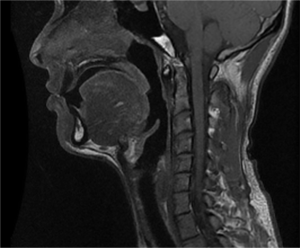Obstructive sleep apnea (OSA) surgery outcomes vary widely, ranging from 5% to 65% for individual or combination procedures. To predict – and thereby to improve – outcomes, we are examining the role of drug-induced sleep endoscopy in surgical evaluation and treatment. We are also developing ways to evaluate and improve electrical stimulation of the hypoglossal nerve for treatment of OSA.
Drug-Induced Sleep Endoscopy
Obstructive sleep apnea surgery outcomes vary widely, with the chances of a successful outcome ranging from 5% to 65% for individual or combination procedures. To predict – and thereby to improve – outcomes, we must determine what predicts surgical success. This research examines the role of drug-induced sleep endoscopy (DISE) in surgical evaluation and treatment. DISE involves the fiberoptic examination of the throat under sedation to determine the pattern of airway obstruction.
(Lead Investigator: Eric Kezirian)
Selected publications:
Drug-Induced Sleep Endoscopy.
Charakorn N, Kezirian EJ. Otolaryngol Clin North Am. 2016 Dec;49(6):1359-1372. PMID: 27720169
Advances in the Diagnosis of Obstructive Sleep Apnea: Drug-Induced Sleep Endoscopy.
Ravesloot MJL, Benoist L, van Maanen P, Kezirian EJ, de Vries N. Adv Otorhinolaryngol. 2017;80:22-27. PMID: 28738362
Hypoglossal Nerve Stimulation
Upper Airway Stimulation treats obstructive sleep apnea by delivering electrical stimulation to the nerve that controls tongue movement (hypoglossal nerve). This is accomplished using an implanted medical device that has some similarities to a heart pacemaker. Sleep is associated with a loss of muscle tone that contributes to airway obstruction in individuals with obstructive sleep apnea, and Upper Airway Stimulation restores some of this muscle tone. This research examines the outcomes of hypoglossal nerve stimulation and factors associated with outcomes. We are part of a post-FDA-approval study of Upper Airway Stimulation and a registry of implanted subjects.
(Lead Investigators: Eric Kezirian and Terese Hammond)
Selected publications:
Application of drug-induced sleep endoscopy in patients treated with upper airway stimulation therapy.
Ong AA, Ayers CM, Kezirian EJ, Tucker Woodson B, de Vries N, Nguyen SA, Boyd Gillespie M. World J Otorhinolaryngol Head Neck Surg. 2017; 3(2):92-96. PMID: 29204585
Long-Term Cost-Effectiveness of Upper Airway Stimulation for the Treatment of Obstructive Sleep Apnea: A Model-Based Projection Based on the STAR Trial.
Pietzsch JB, Liu S, Garner AM, Kezirian EJ, Strollo PJ. Sleep. 2015; 38(5):735-44. PMID: 25348126
